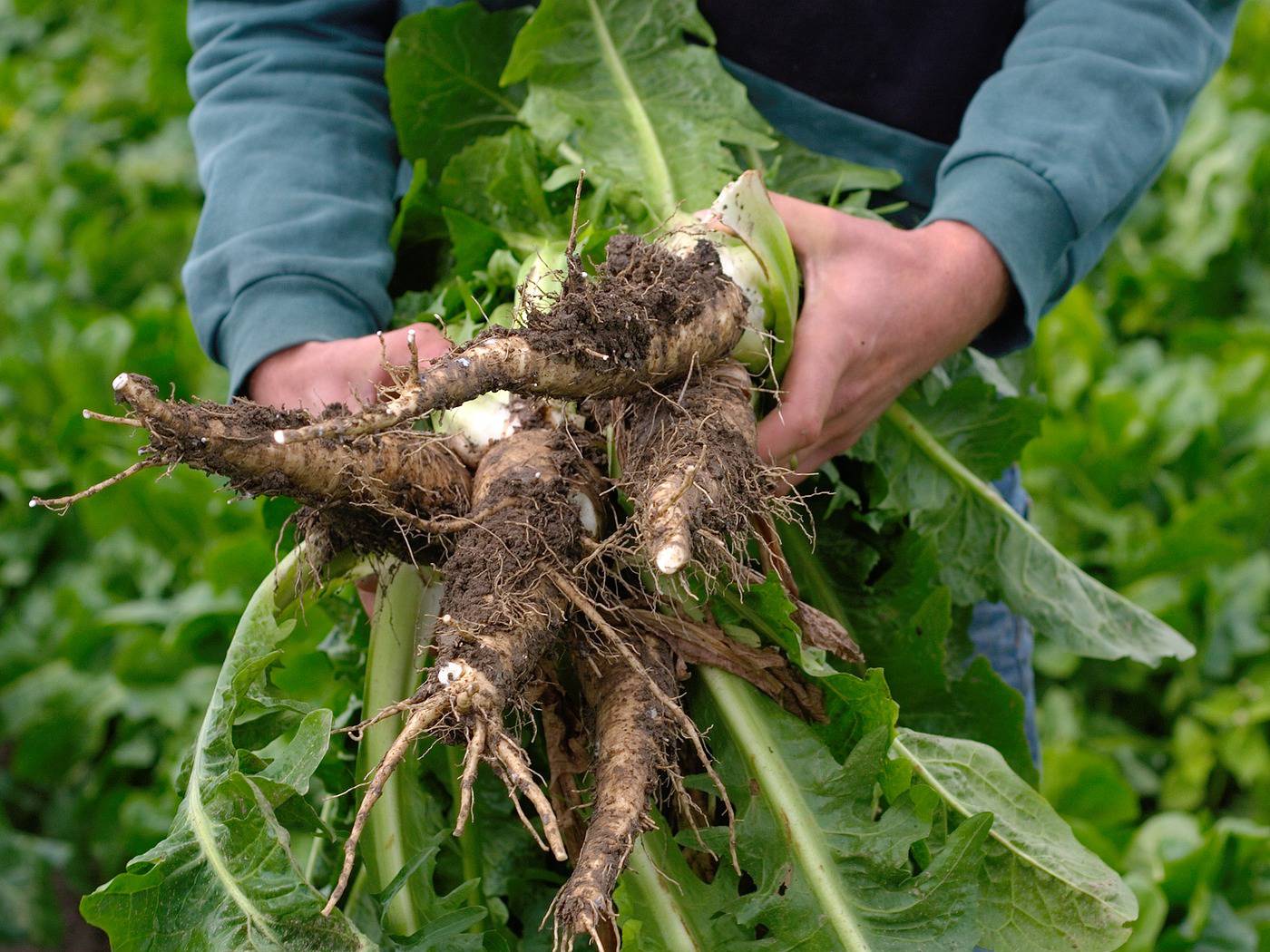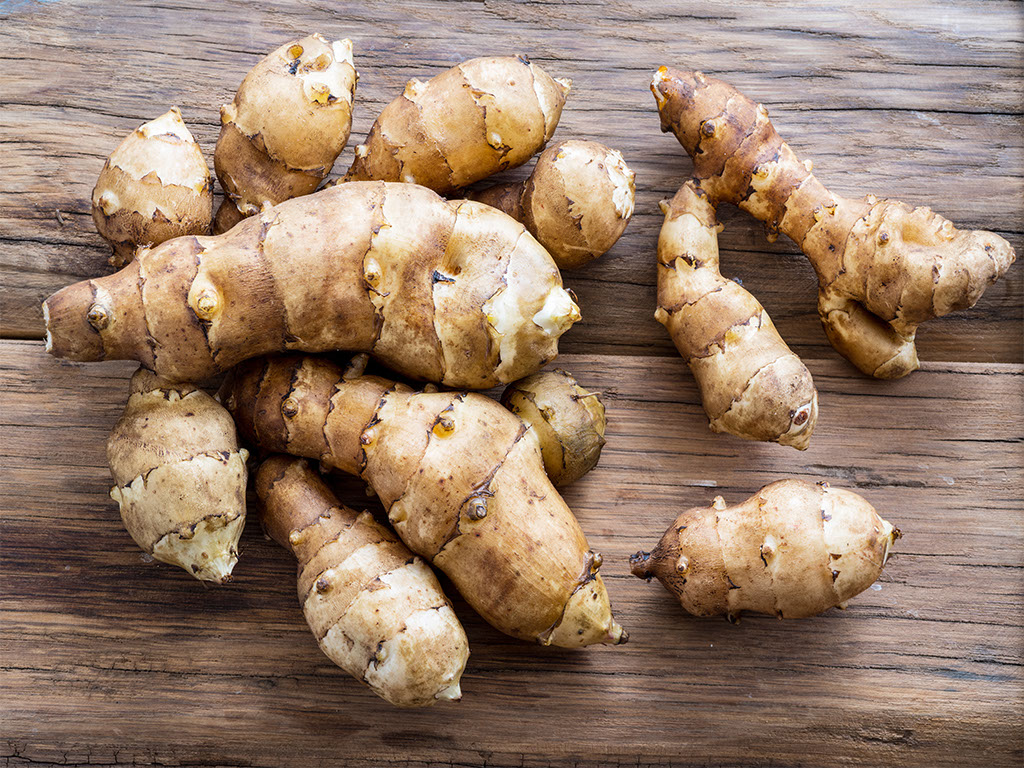
Inulin is a resistant to digestion in the human small intestine, but it can be fermented in the large intestine, offering benefits as a prebiotic fiber.
Prebiotic fiber like inulin simulates the growth of beneficial bacteria called probiotics, especially Bifidobacterium, conferring health benefits.2
These benefits include:1
Considering that most people fall short of meeting current fiber recommendations, the widespread use of inulin as a food ingredient is an effective strategy for ensuring the desired properties of food products while helping people increase their fiber intake.
Inulin is produced using extraction and purification techniques before its spray-dried to produce a powder.
Commercially, most inulin is produced from chicory, Jerusalem artichoke, and agave.
Chicory inulin is a white powder that has a neutral flavor with no aftertaste. Its sweetness is just 1–14% compared with sucrose, depending on the chain length.
Due to its poor digestibility, the energy value of inulin ranges from 1–1.5 Calories per gram, making it useful for a range of food products marketed as low calorie or sugar.
For reference, carbohydrates and protein each contain four calories per gram and fats contain nine.
In addition to the health benefits prebiotic fiber brings, inulin has various functions in many food applications (table 1).
Table 1 Food applications of inulin. Adapted from Shoaib M, et al.2
| Application | Function | Concentration per weight % |
| Breads and cakes | moisture preservation, sugar replacement | 2–15% |
| Breakfast cereals | texture, appearance | 2–25% |
| Dairy products | fat and sugar replacement, texture, mouthfeel, foam stabilization | 2–10% |
| Meat products | fat replacement, texture, stability | 2–10% |
| Frozen desserts | texture, reduced calories, melting behavior | 2–10% |
| Table spreads | fat replacement, texture, spreadability, emulsion stability | 2–10% |
| Fillings | fat replacement, texture | 2–30% |
| Dressings | fat replacement, body, mouthfeel | 2–10% |
| Chocolate | Replacement of sugar and fat, melting behavior | 5–30% |
| Fruit preparations | replacement of sugar, body, mouthfeel | 2–10% |
| Meal replacements | Sugar and fat replacement, reduce calories | 2–15% |
| Tablets | sugar replacement | 5–100% |
Depending on the application inulin may be used in combination with high-intensity sweeteners.

According to a report published by Fior Markets, the global inulin market is expected to grow from $1.10 billion (USD) in 2020 and reach $1.86 billion by 2028, representing a continual annual growth rate of 6.7% during the forecast period.3
Factors driving the market are the rising demand for low-calorie and low-sugar products and the rising health awareness from consumers surrounding the health benefits and effects of inulin. Factors restraining the market are related to the emergence and presence of other dietary fibers and prebiotic ingredients that may be less expensive.
Still, with the approval of health claims authorized by the European Union Commission and the recognition of inulin as Generally Recognized as Safe (GRAS) by the US Food and Drug Administration, consumer acceptance and trust of products containing inulin continues to grow.

Inulin is a type of prebiotic fiber that offers a range of health benefits in addition to improving the organoleptic characteristics of various food applications.
Inulin is especially useful for replacing fat and sugar without compromising on taste and texture.
The demand for food products made with inulin is expected to grow as consumers continue to demand products low in sugar and calories that provide functional benefits.